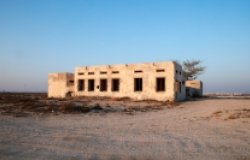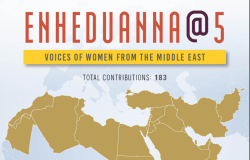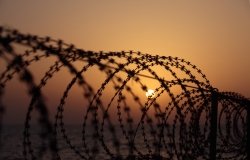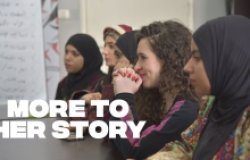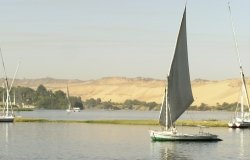
A blog of the Middle East Women's Initiative
The Inescapable Trauma of the February 6 Earthquakes Continue to Haunt Syrian Refugees in Turkey
Tara Kangarlou writes, one year after the devastating earthquakes in Turkey and Syria, that survivors are still reckoning with its aftermath; in particular, Syrian refugees in Turkey, whose trauma from war and displacement was compounded by the disaster.
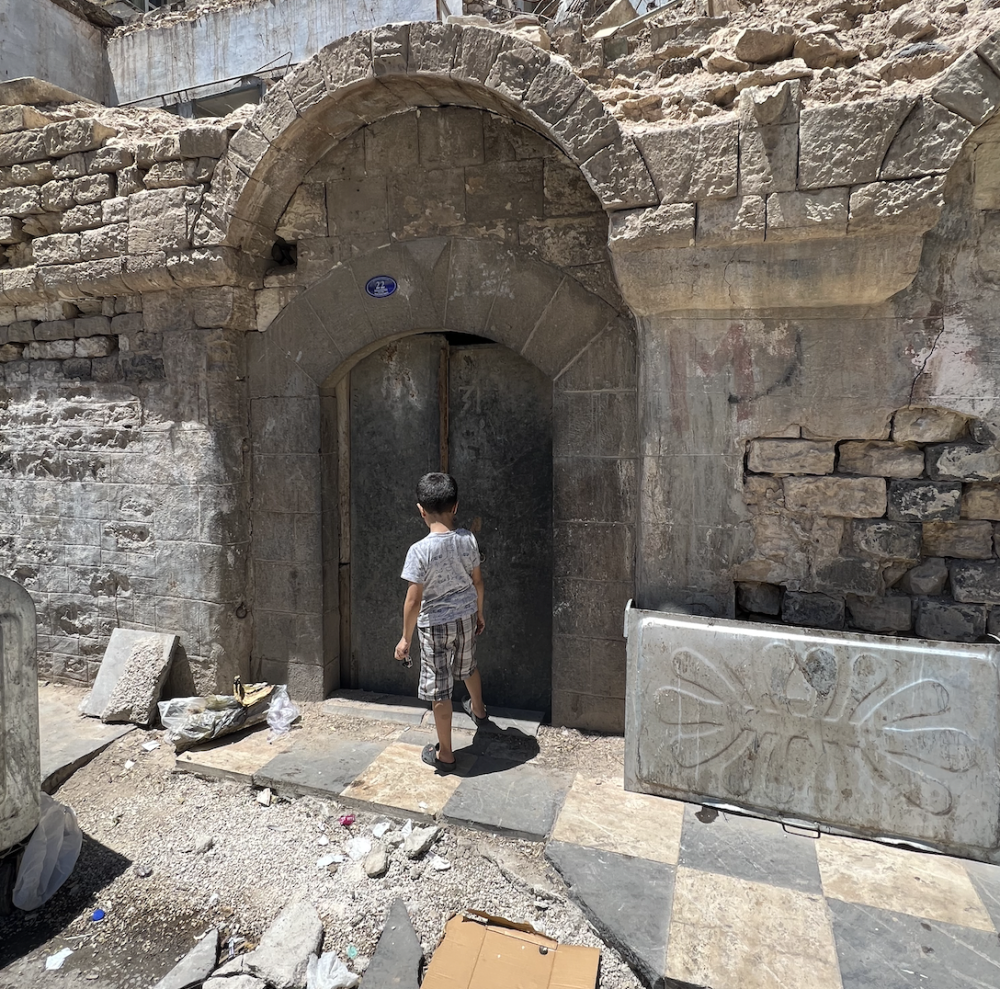
Courtesy of Tara Kangarlou.
“The effects of trauma after trauma after trauma for the group of Syrian refugees who have fled war and then experienced the earthquake in Turkey are what can create more PTSD symptoms that can very deeply affect their sense of safety,” begging the dreadful question of “where can I ever be safe?”
“We escaped a death only to be faced by another.” Batul’s feeling is a common sentiment shared by nearly every single Syrian refugee interviewed in the devastated border provinces of southern Turkey with Syria—a poignant reminder of the long-lasting and invisible wounds of war and displacement that are worsened by the deadly earthquakes that shook the region a year ago.
The February 6th quakes affected approximately 8.8 million people, killed more than 50,000 individuals, injured hundreds of thousands, and traumatized many more; most of whom—especially the Syrian refugee community in southern Turkey and the internally displaced persons (IDPs) in northern Syria—were already in severe distress.
The disaster’s toll
Eleven Turkish provinces, including Adana, Gaziantep, Kahramanmaras, and Sanliurfa—home to the country’s majority Syrian refugee population—were struck. In Syria, the quake severely affected war-torn cities of Aleppo, Hama, and Idlib, causing severe trauma to a population who has undergone years of civil war, an ISIS insurgency and occupation, as well as multiple internal displacements.
With over three million refugees, Turkey remains host to one of the largest populations of Syrians in the region. This is still the case because years of political infighting officials and the country’s fraught relationship with the EU, and at times the US, have toyed with the fate of this vulnerable population.
“I still remember when I would hear explosions and strikes near our home in Aleppo. I would hold the pillow on my head, imagining that if the roof collapses, I’d be safe—imagining that I’m in the clouds, I’m protected, and nothing that would fall could kill me,” the 31-year-old mother of three recalled.
In 2013 Batul left her hometown of Aleppo—Syria’s largest city that became one of the epicenters of the civil war—which was soon engulfed by militant insurgents and a rising Islamic State, followed by a disastrous siege that led to years of bloodshed in the once populous metropolis.
At the time of her escape from Aleppo, Batul was studying business management and sociology at Aleppo University. After spending some time in Azaz in northern Syria, the young student and her husband fled to Kilis—just a few miles away from Syria’s northern border—home to the largest percentage of Syrian refugees in a single Turkish city at 80% of its population.
“Once again, death called,” said Batul, as she remembered the trembles she felt while lying on a hospital bed, undergoing what millions of women elsewhere would regard nothing short of a momentous joy and a once-in-a life-time experience.
“I was in labor when the first earthquake hit. I saw the surgical utensils shake on the trays next to my bed. Everything was moving and I was about to give birth.”
It was then that so much of her past traumas were once again triggered—except this time, instead of airstrikes and bombs, the earth was shaking Batul to her core. “The nurse rushed me downstairs, and we waited by a tree for hours.”
In the freezing temperatures of that faithful morning, Batul survived and hours later, as thousands around her lost their lives, she miraculously gave birth to a healthy girl.
“I named her after the Greek Goddess Sandra—the defender of humanity.” In the weeks and months following the quake, Batul suffered from depression and anxiety; feelings that she explains are reminiscent of what she felt in the years following her departure from Aleppo.
“At least then I felt I had some control. I left Aleppo. I was able to flee, but when the quake happened, I had no control. Nothing was in my control. I was about to lose everything—again.”
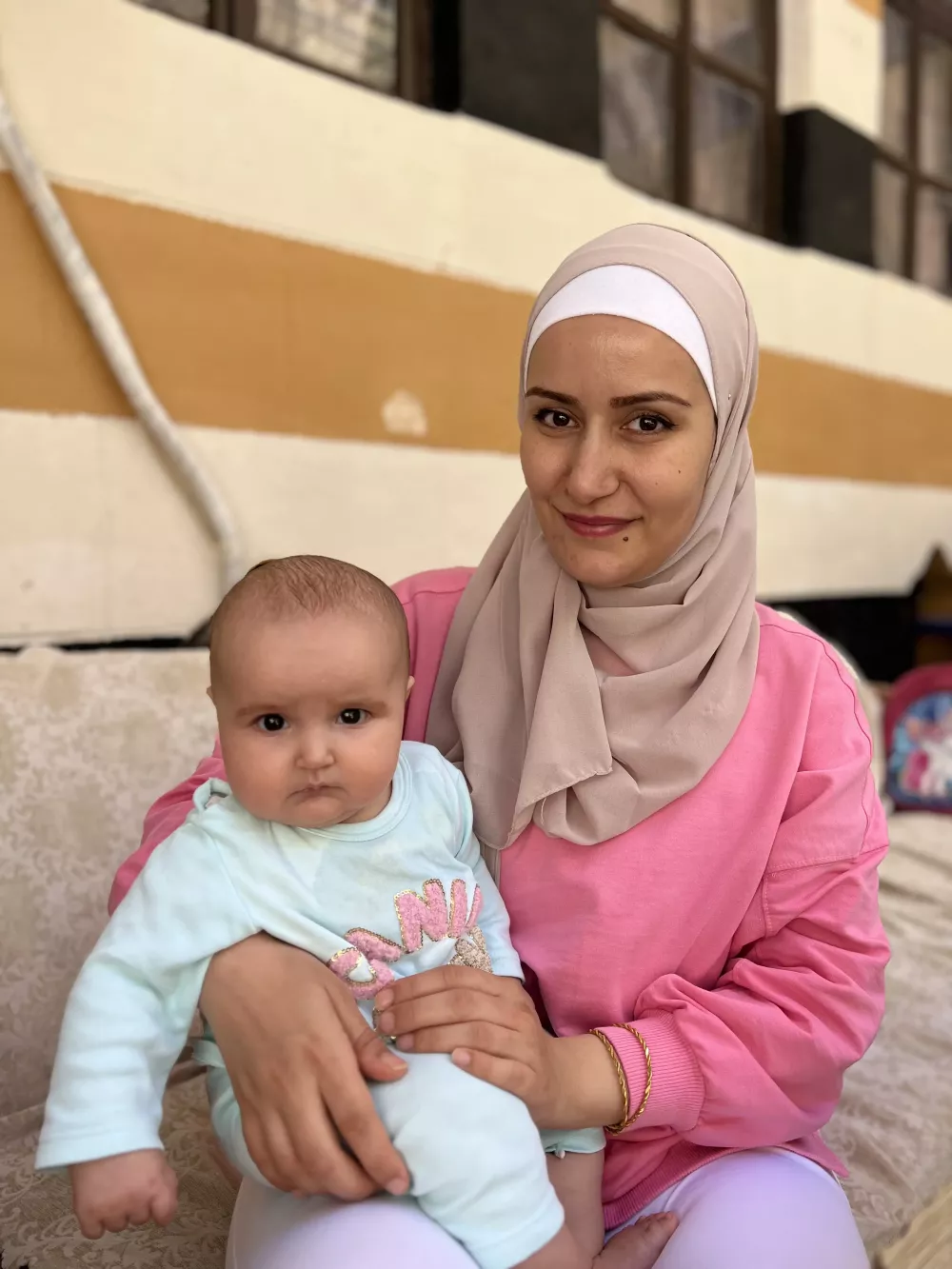
Courtesy of Tara Kangarlou.
Trauma-informed support
“There’s a constant feeling of fear and anxiety as a result,” explains Nancy Yamout, a Lebanese social worker and therapist who worked closely with Batul and nearly 60 other Syrian survivors of the quakes in southern Turkey in the months that followed the tragedy. “They feel they escaped death in war back home and now in Turkey they also faced death. For this population, there is absolutely no sense of stability, safety, and support. All the while, many of them are living with a constant fear of forced repatriation back to Syria.”
Ashley Dorr is a New York-based art therapist who played a vital role in working with Yamout to design effective trauma-relief programming for Batul and many other Syrian refugee beneficiaries in Kilis and neighboring regions.
“The effects of trauma after trauma after trauma for the group of Syrian refugees who have fled war and then experienced the earthquake in Turkey are what can create more PTSD symptoms that can very deeply affect their sense of safety,” begging the dreadful question of “where can I ever be safe?” said Dorr.
“Every single person I know has either lost between one to five family members or five to 15 extended family members,” explained Hisham Dirani, a Syrian engineer by craft who has been working with Violet, a nonprofit organization focused on the various safety, security, and educational needs of Syrian refugees in Turkey and IDPs inside Syria since 2020.
Meeting with him just a few miles north of Kilis, Dirani recounted the many stories of loss from his friends, family members, and colleagues at Violet.
“When the quake happened, my close friend rushed downstairs with his wife and two kids; but he first stopped at his sister’s [apartment] that was just one floor down. There, he found his sister and her entire family killed, except one child.” With a visible trembling, Dirani continued with a story that is far too familiar to the many who endured the tragedy of the February 6 quakes. “He put everyone in his car to flee—but along the way, in the car, his niece too died in his wife’s arms.”
Generations of trauma
Yamout explains how the anger, pain, guilt, and fear that has built over the years, and at times over generations (alluding to other conflicts in the region, including those in Lebanon and Palestine), can lead to generational trauma that only worsens in time.
“You cannot pour from an empty cup,” Yamout says as she underscores the essential need to support mothers, fathers, and caregivers, who are not only grappling with their own PTSD and trauma but are so desperately trying to support their children.
“When you support a mother’s or father’s mental health and also allow them to understand the logic behind mental wellbeing, it is then that they can actually help support the mental and psychological wellbeing of their children—otherwise it’s impossible,” adding that if the adults and caregivers, in times of crisis or in rehabilitation stages in the months after war, displacement, or a natural disaster, remain in fear, “they cannot support their child who may very well be suffering from trauma, PTSD, fear and anger.”
Behind years of trauma and fear, there is a surprising sense of calm and hope in Batul’s voice—one that she says she owes to Yamout’s therapy and healing support over the course of a few months.
“In my home country of Syria, the land drank more blood than water. The land smells death more than life. Here, that fear follows." Batul and many mothers and fathers alike want to move forward and, in more ways than one, find inspiration and hope in their children.
“She is a miracle. I don’t want to be weak; life goes forward, and I get my entire energy and inspiration from my children,” said Batul as she held Sandra closely, with a grip so tight yet so gentle at heart.
The views expressed in this article are those of the author and do not express the official position of the Wilson Center.
About the Author


Middle East Program
The Wilson Center’s Middle East Program serves as a crucial resource for the policymaking community and beyond, providing analyses and research that helps inform US foreign policymaking, stimulates public debate, and expands knowledge about issues in the wider Middle East and North Africa (MENA) region. Read more

Middle East Women's Initiative
The Middle East Women's Initiative (MEWI) promotes the empowerment of women in the region through an open and inclusive dialogue with women leaders from the Middle East and continuous research. Read more

